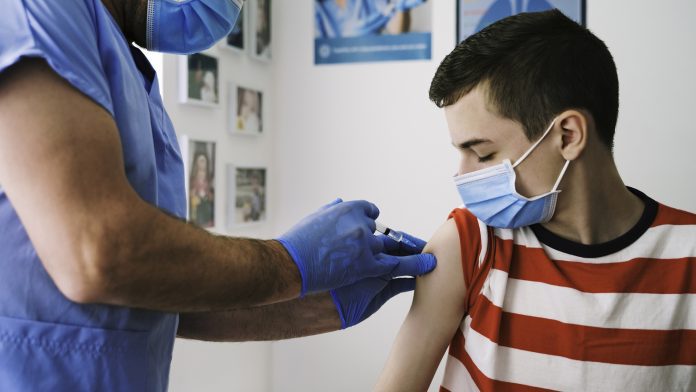
Researchers from the University of Oxford have found that the UK’s MenACWY meningitis vaccine programme generates herd protection protecting all age groups.
In the new study, the researchers assessed throat swabs and the prevalence of meningitis-causing bacteria before and after the introduction of the meningitis vaccine programme in two cross-sectional studies.
The MenACWY meningitis vaccine is routinely offered to teenagers in school years 9 or 10. It is a single injection that protects against four strains of the meningococcal bacteria – A, C, W and Y. This infection is rare but can cause life-threatening disease.
Introducing the MenACWY vaccine
In 2015, the UK replaced a vaccine targeting only the C group with the MenACWY vaccine due to rising cases of the W and Y meningitis strains from 2009. To encourage herd immunity, the vaccination programme enrolled teenagers aged 14 to 19, where transmission of the meningococcal bacteria is known to be highest.
One of the lead authors, Matthew Snape, who was a professor in Paediatrics and Vaccinology at the Oxford Vaccine Group during the study, said: “These studies report the results of throat swabs taken from over 24,000 teenagers in more than 170 secondary schools across the country, showing yet again the fantastic enthusiasm of the UK public for taking part in research.
The results show us that by immunising teenagers with MenACWY vaccines we not only protect them directly but also reduce the risk of all others in the community suffering from meningitis and sepsis due to these bacteria.
Immunising teenagers rather than infants means we get more benefit out of each dose given. These two studies, therefore, provide invaluable data to help us use these vaccines effectively, both in the UK and internationally.”
The impact of the meningitis vaccine programme
The researchers compared two studies – the UKMenCar4 study, conducted between September 2014 to March 2015 before the MenACWY vaccine was introduced, and Be on the TEAM study, conducted between March 2018 to November 2018 after the vaccine was introduced.
The data from 24,062 students aged between 15 to 19 were included and the researchers concluded that:
- C, W, and Y meningococcal carriage decreased from 2.03% to 0.71%;
- carriage of the W group decreased from 0.34% to 0.09%;
- carriage of the Y group decreased from 1.6% to 0.5%; and
- carriage of the C group remained rare (0.07% to 0.13%).
The findings align with data from the UK that shows that the prevalence of MenW disease has fallen in all age groups since the teenage MenACWY vaccine campaign. This provides strong evidence for the need to target age groups using the meningitis vaccine with a high prevalence of infection transmission.
Martin Maiden, Professor of Molecular Epidemiology at the Department of Biology, University of Oxford, lead author of the paper, said: “We have been systematically investigating meningococcal vaccination and its effects on carriage in Oxford since 1999. These studies have been crucial in enabling the most effective use of meningococcal vaccines around the world.
In combination with our work with colleagues at Public Health England (now HSA) that characterized the MenW epidemic variant at the genomic level, this work helped to interrupt an epidemic that would likely have affected thousands of individuals. This demonstrates the importance of long-term studies that permit the anticipation of epidemics and pandemics and enables them to be curtailed before they impact the population too severely.”










